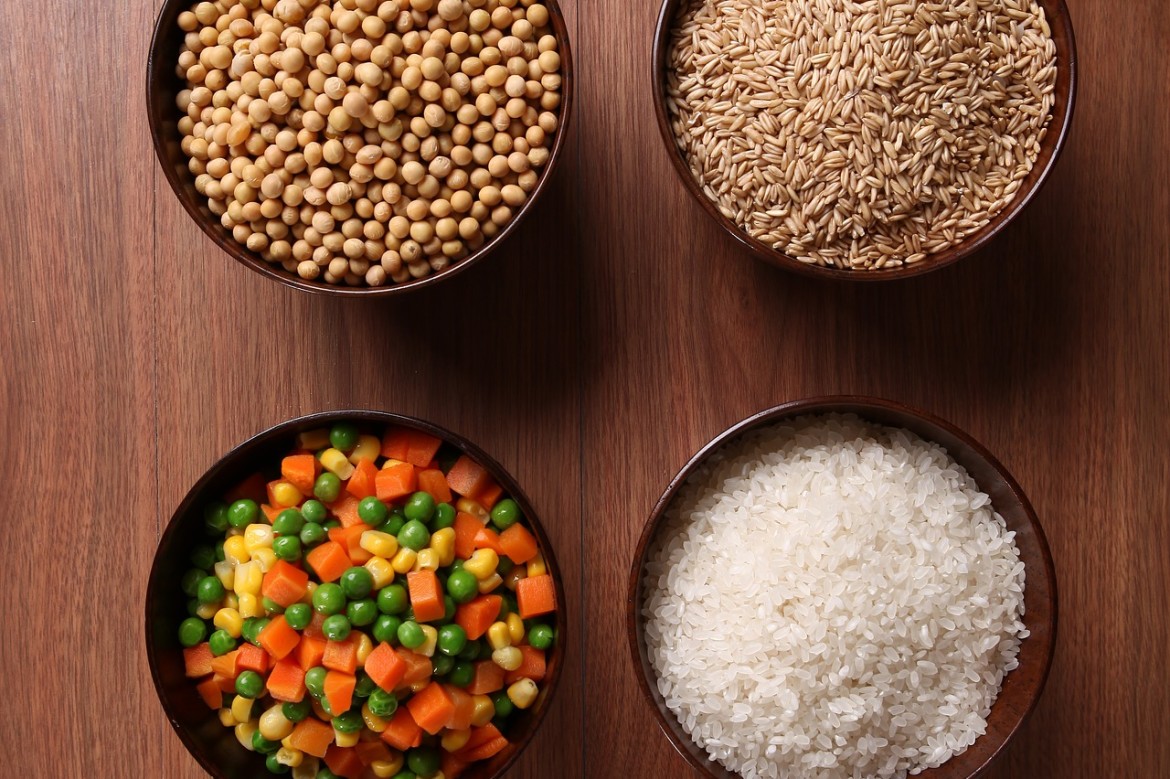We all know we should eat more whole grains, but with the over flood of information regarding them, this article will aim to break down the facts and include tips on how to incorporate whole grains into your diet. Whole grains contain all the parts of the seed: the bran, germ, and endosperm. When all the layers of the kernel are intact, the grain has a higher nutritional value of antioxidants, protein, vitamin B, minerals, fiber, and healthful fats.
Whole grains that have minimal processing include steel cut oats, cracked wheat, and stone ground whole wheat. The next best type of grain is milled whole grains where the bran, endosperm, and germ are milled into a flour to make whole grain pasta and bread. The least nutritious grains are refined grains – they contain only the endosperm and have a higher glycemic load, and therefore rapidly absorb into the blood stream. Milled whole grains have a similar glycemic load to refined grains, and for that reason, the best option is to select intact whole grains in their natural form such as the ones discussed below:
Barley – Hulled barley is the intact version because only the outermost hull of the grain is removed. Pearl barley is not an intact grain because the hull and bran are removed. Hulled barley is the most nutritious form, but requires longer cooking and has a chewier texture. Barley contains 13 grams of fiber per cup and minerals such as selenium, copper, phosphorus, and manganese. Barley helps lower cholesterol by binding to it in the stomach and removing it from the body. It can be used in soups or in place of rice in pilafs and stir-fries. Make sure to soak barley overnight to make it more digestible and reduce cooking time.
Oats – Oats are high in fiber, manganese, selenium, magnesium, zinc, and phosphorus. They are hulled, but the bran and germ layers remain. Oats are processed in a variety of way that do not affect their nutritional value. Oat groats, Steel-cut, Old-fashioned oats, and Quick cooking oats are all great options. Note that quick cooking oats, however, contain larger amount of sodium.
Brown Rice – Brown rice only removes the hull of the kernel, which is not very damaging to its nutritional value. White rice removes most of the B vitamins, phosphorus, iron, and all the fiber. Brown rice is a good source of manganese, selenium, magnesium, and fiber.
Quinoa – Quinoa is technically a seed that contains large amounts of lysine and isoleucine, which makes it a complete protein. Its fatty acids mostly come from oleic acid, a heart healthy monounsaturated fatty acid. Quinoa is also a good source of folate, copper, and phosphorus. Quinoa is best used in place of rice or as a breakfast cereal.
Millet – Millet does not contain gluten, so it is safe for individuals who are gluten sensitive. It is high in manganese, phosphorus, magnesium, niacin, folic acid, vitamin B4, and fiber. It can be used in place of rice.
Buckwheat – Buckwheat is a fruit seed and is suitable for people sensitive to wheat and gluten. Buckwheat helps lower blood lipids, is a good source of magnesium, and is a complete protein. Buckwheat groats have the best nutritional profile.
Danielle Hamo

